News
Artefacts Officially Returned to Their Home Institutions
The Karwan Conference Centre played host to a special event today. The Malbork Castle Museum and the Malbork City Museum exchanged exhibits, which could return to their home institutions after 80 years.
Shared History
It is common knowledge that the Malbork Castle Museum and the Malbork City Museum both have roots in the city’s pre-war history, and that both institutions are the informal heirs to the museums of that era. But let us have a closer look, although still a cursory one, at how they were established and operated before World War II.
Malbork Castle
In the early 19th century, after years of neglect, alterations and decay, Malbork Castle once again became of interest to the Prussian elite and authorities. The enormous political and ideological potential of the mediaeval stronghold combined with its architectural splendour led to it being granted legal protection and large-scale restoration plans being drawn up. A long-term process of collecting exhibits and performing museum work also began in this period, although the castle was only granted the rank of state museum (Schloss Staatliches Museum; Staatliche Sammlungen des Schlosses) in July 1934. Several collections were stored here before 1945, including paintings, handicrafts and items of cultural and historical importance. The largest and most prominent of these were the coin and military paraphernalia collections, in addition to two large book collections: a numismatic and a general one. Many of the items, particularly furniture, were copies whose purpose was to recreate the atmosphere of the old order headquarters.
City Museum
The municipal institution, on the other hand, formally established on 17 September 1925 under the name Municipal Collections (Städtische Sammlungen), originally displayed its exhibits in the new town hall building (modern-day preschool building on Derdowskiego Street). This lasted until 1927, when the museum was relocated to the basements of the old Royal Secondary School (modern-day court building on 17 Marca Street). That is also when it was renamed the Malbork City Museum (Städtische Museum Marienburg), with Kurt Voigtmann serving as its first director. The museum collected exhibits associated with the city’s guilds, documents, family mementos, coins, liturgical items, military memorabilia, etc. Also prominent were archaeological finds from excavations conducted in such villages as Wielbark and Gościszewo. In addition to this, the museum had a large book collection and its own archive.
Both museums not only operated alongside each other for many years, each to the best of its ability and in accordance with its assigned role, but also collaborated on many levels. The West Prussia State Authority files stored at the State Archive in Gdańsk contain sparse remnants of late-1920s correspondence between the then-directors of both museums – Kurt Voigtmann and Bernhard Schmid. On 13 December 1926, Voigtmann sent his thanks to Schmid for donating a copper coin to his museum, and asked if the castle would be interested in
‘adding to the castle’s military collection an iron cannon barrel, which is currently built into the front corner of the plinth near the Old City Hall. We would be willing to donate it to you in return for items which are of value from the perspective of the municipal collection.’ In his response from January 1927, Bernhard Schmid confirms that the castle would indeed be interested in acquiring the barrel, and asks for further details regarding its possible donation. In addition, he extends an offer of his own: ‘We are in possession of a city coat of arms, a stone relief from 1589, originally from the old Stone Tavern, later known as Hotel zur Stadt Lepzig. Alongside the weathervane and the councillors’ bench at St John’s, this is the oldest architectural depiction of the city’s coat of arms. We have restored its missing pieces, placed it on a brick surface and added a frame. Should you be interested, please have the City Hall submit a formal request, so that I can present it to the Governor.’
The history of the items referred to in the letter remains unexplored, although it certainly merits further research, as it may eventually result in uncovering new interesting facts. However, it remains unconfirmed whether the exchange actually took place, especially considering that a cannon exhibition was planned by the City Museum in 1928. Sadly, we do not know if the barrel mentioned here was among those on display. The truth of the matter remains to be discovered. What matters most, however is that we have documents confirming past collaboration, and it is likely that the aforementioned correspondence was not a one-off occurrence.
Back to History –
Both museums operated in the city until 1945. The castle collections were never evacuated, and were instead secured on-site in various hiding spots around the castle complex (in the basements, the treasury, the Clergy Tower, the chapel of St Lawrence, etc.). Seeing the castle as a safe place, the Germans also brought other precious collections here from surrounding areas. These included the collections of the City Museum, which were deposited in the High Castle on 14 August 1944. Thus, the fates of both institutions became intertwined yet again.
Shortly after the liberation of Malbork and the re-establishment of the Polish government, the first attempts to secure the castle were made. The institutions responsible included the Art and Culture Office of the Malbork County Authority, tasked with looking after the ruined stronghold and securing the collections stored within.
This fact is of key importance from the perspective of the return ceremony. Before the Polish Armed Forces took interest in the castle and established Branch No. 1 of the Museum of the Polish Armed Forces, the Culture Office had managed to secure a number of artefacts and move them to the County Authority building and other nearby institutions. This is the story of the exhibits on display today and the path that has led them here.
Book Collections
The Library of the Malbork Castle Museum is in possession of a number of books of varying provenance, including works written in the castle before the war. Although this collection is not as extensive as we would like, it is nevertheless very valuable to us. The collection also includes more than ten books published by various Malbork-based institutions.
Since 2018, the Castle Museum has been conducting regular research on war losses and the scattering of Malbork Castle collections as part of the Researching Polish Wartime Losses ministerial programme. For this reason, the director approved our decision to donate the book collection to the Malbork City Museum, which stands guard over the city’s history and traditions. Another reason for this was that one of the books contains a seal indicating that it originates from the ‘Municipal Collection’, the first iteration of the pre-war museum. The remaining books, on the other hand, have ties to two Malbork schools, the Winrich v. Kniprode-Schule and the Royal Secondary School in Malbork. Of the twelve books on display today, five are early prints from before 1800, and the other seven originate from the 19th century. As befits a collection inherited from school libraries, also included are a number of textbooks (including literature, religious education and such classics as Ovid and Tacitus).
It is likely that these and other collections from the city were brought to the castle shortly before the end of the war, where they were able to survive unscathed. As a result of the preservation efforts, they were probably mixed with the pre-war castle collection, which led to them remaining here. Today, we can return them to the City Museum.
Our neighbours reacted with enthusiasm to the initiative, and responded with an equally important and beneficial offer – to return to our collections a set of chairs originally from the castle halls.
This is yet another reason why today’s celebration is a special one.
Chairs
The chairs, themselves a pastiche of 17th-century furniture, were made ca. 1894 for the Castle Reconstruction Authority, and for years were part of the interior design of the castle. Archival photographs show they were present in two rooms – the convent hall in the High Castle in 1894, and the house commander’s chamber, again in the High Castle, in 1903. How many such chars were originally purchased is impossible to determine, but it must have been a large set. Judging by the surviving markings, it is likely they numbered into the dozens. We are currently in possession of four chairs. These were given to the County Authority after the war, from which they were transported to the Old Town City Hall, before finding their way to the Malbork City Museum.
Every researcher, historian and history enthusiast is sure to agree that some discoveries are accompanied by an entire spectrum of emotions and states, from being focused on the task, the tedium and exhaustion that often accompanies research, to the slight satisfaction resulting from a minor discovery and the euphoria when new facts are established. Although this case is a great deal less complex, discovering the history of a particular exhibit may sometimes require long-term research, or just a little bit of luck. Regardless, it is important to remember that without an established knowledge base, sources, iconography and knowledge of the past, provenance research can never be successful.
Such research, conducted by art historians, museologists and historians, is not a new concept, but yields important insights into how artefacts should be treated in everyday practice. Institutions in Poland and other countries are involved in projects aimed at raising awareness of the importance of the provenance of art, which influences its material and historical value. Such projects are important from the perspective of an institution’s own collections and new acquisitions, as well as within the context of wartime losses. In the latter case, uncovering as much as possible about the history of an item makes it possible to quickly identify it once found.
This is very relevant to the Malbork Castle Museum, as evidenced by today’s ceremony.
‘To search for artefacts scattered as a result of World War II is to attempt to complete the story of this place,’ said Dr Janusz Trupinda, Director of the Malbork Castle Museum.
‘Today’s celebration is proof of something that many considered impossible, that such a small museum could not work together with a museum as grand as the Castle Museum. It appears it can, after all. We are partners on various levels, not only artefact exchange, and this makes me extremely happy,’ said Tomasz Agejczyk, Director of the Malbork City Museum.
‘It is usually the case that the most tangible and spectacular result of this type of research is seeing artefacts return, although in my view, the knowledge itself is a lot more valuable. Knowledge about the provenance of an item, how it’s related to a particular place. And demonstrating the willingness to donate/return an item is the highest level of this knowledge,’ summarised Aleksandra Siuciak, Director of the Castle Research Library and Coordinator of the Losses Project carried out at the Castle Museum in Malbork.
This is the level knowledge we wish all of you!!!
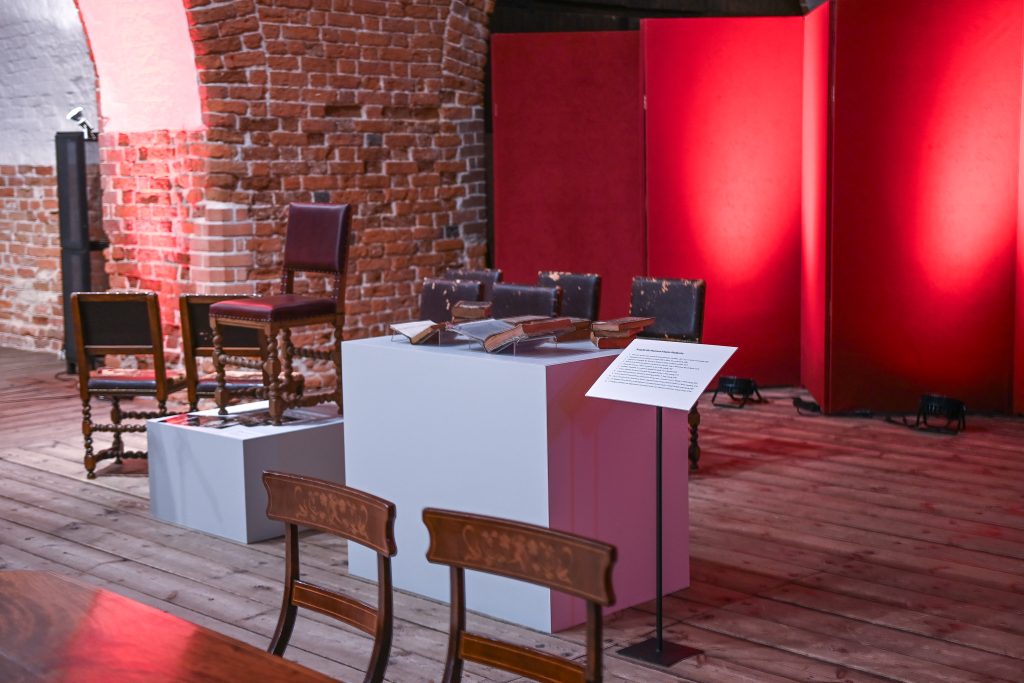
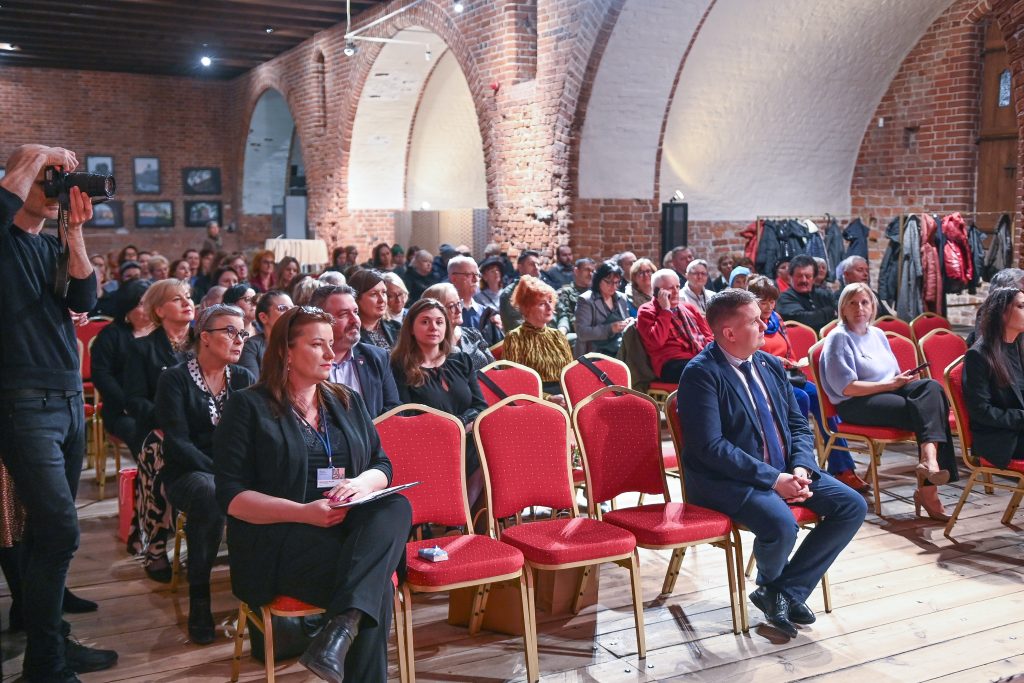
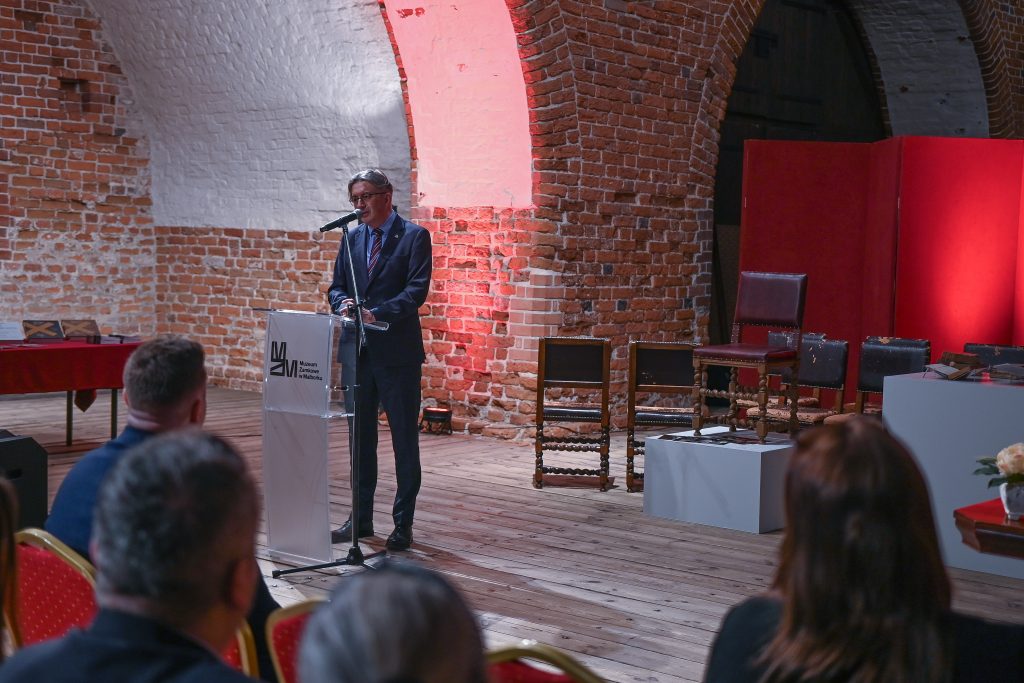
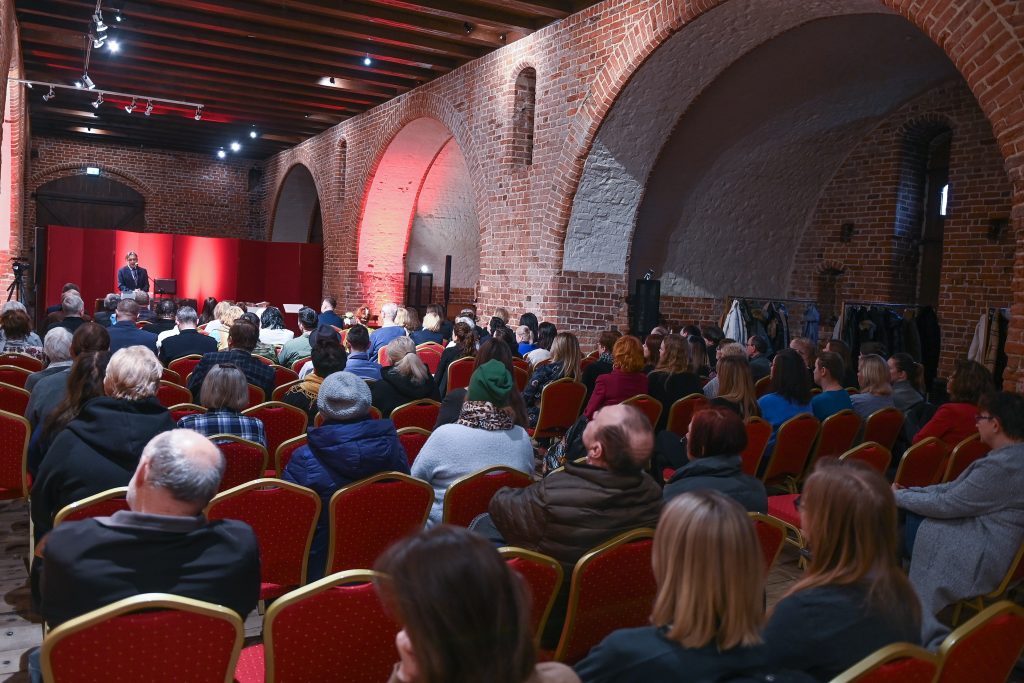
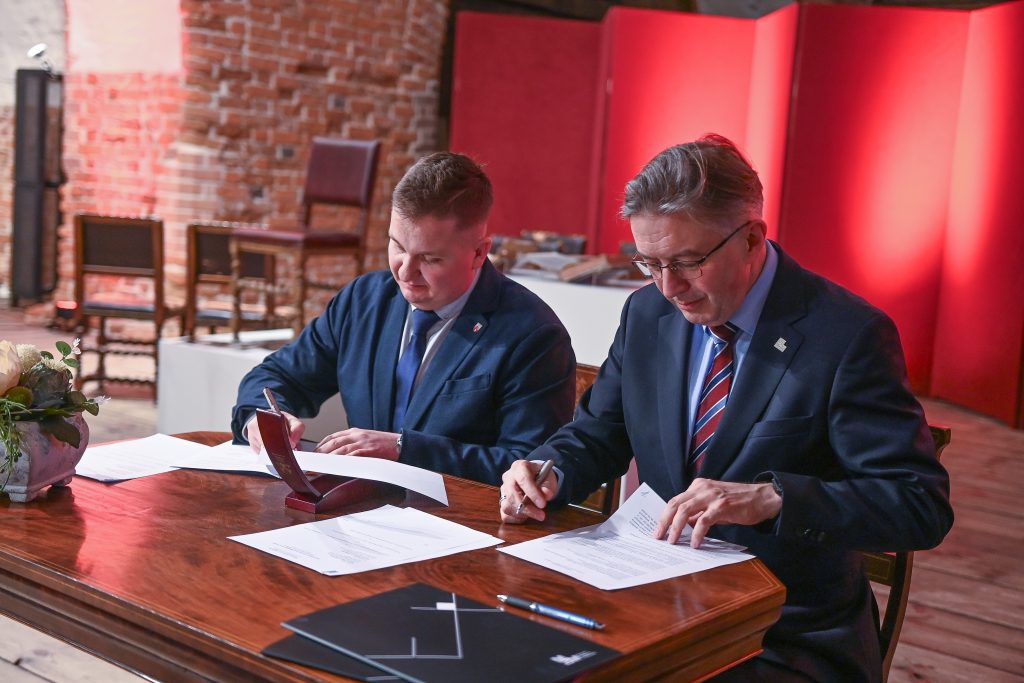
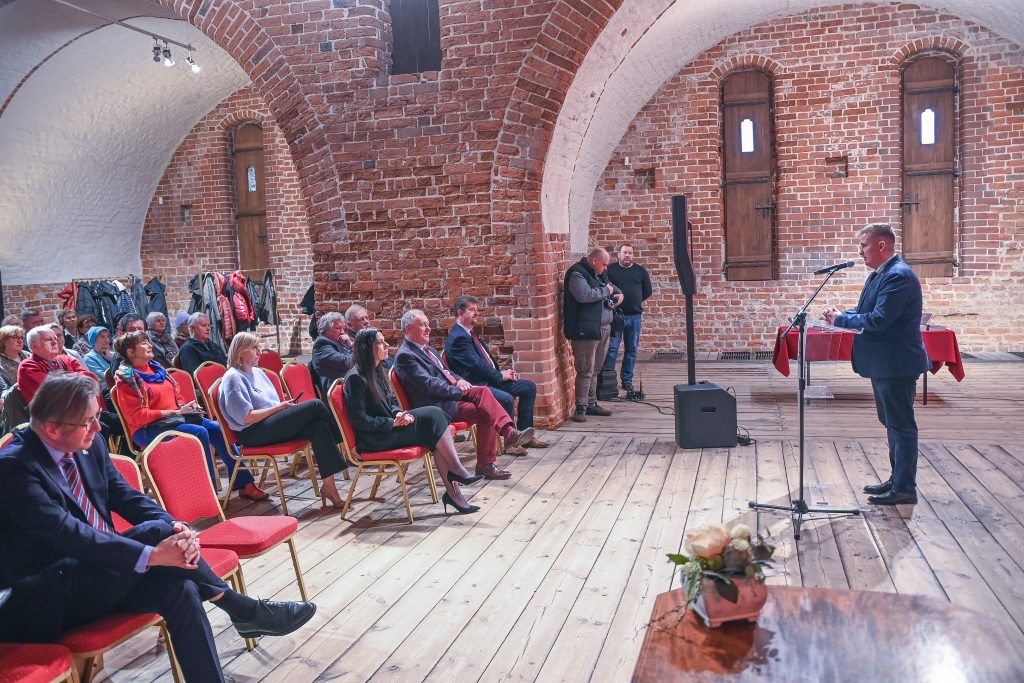
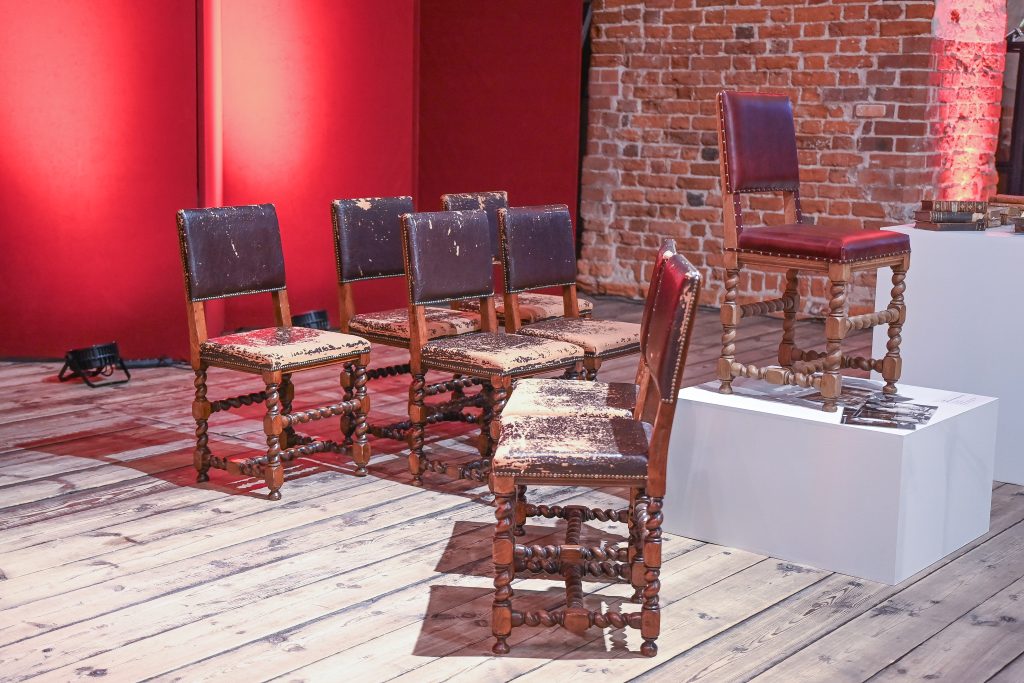
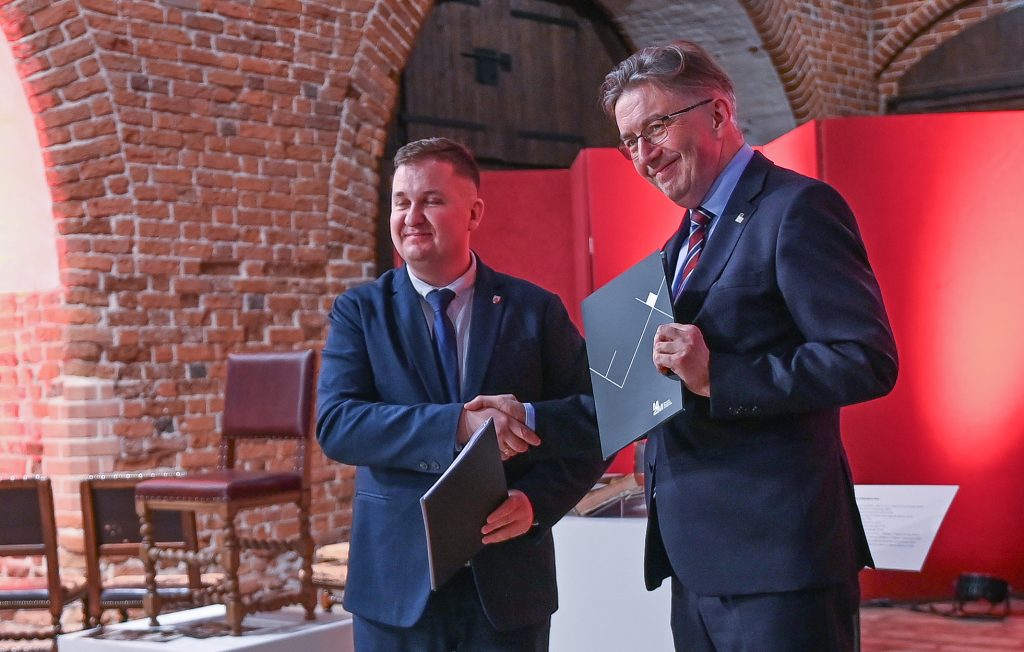
Tickets
Buy tickets online
Opening Hours
- Mon:9:00 - 15:00
Exhibitions
- Tue - Sun:9:00 - 15:00
Contact
Tourist Information
- +48 55 647 08 00
- +48 55 647 09 02
- +48 55 647 09 78
